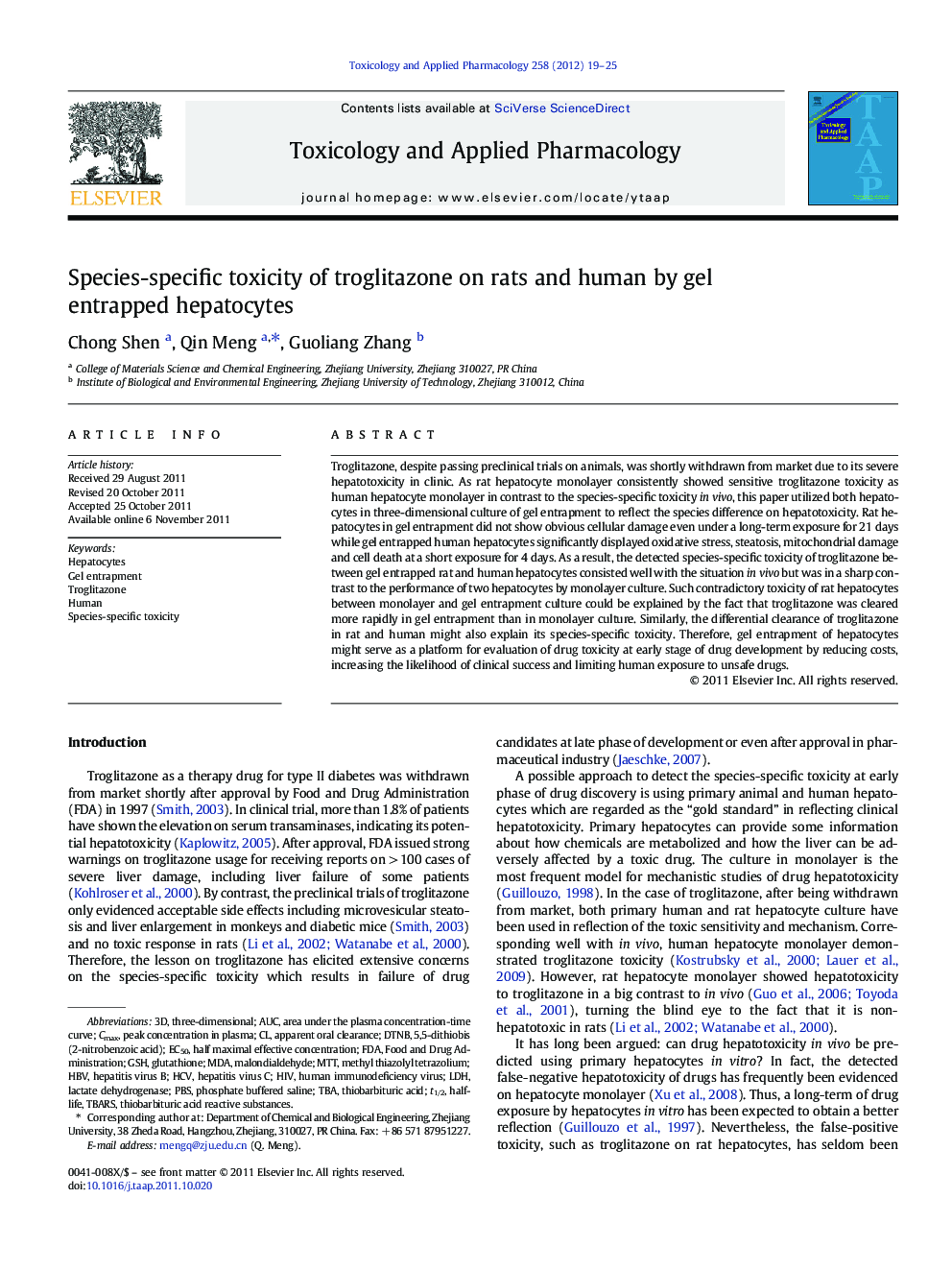| Article ID | Journal | Published Year | Pages | File Type |
|---|---|---|---|---|
| 2569402 | Toxicology and Applied Pharmacology | 2012 | 7 Pages |
Troglitazone, despite passing preclinical trials on animals, was shortly withdrawn from market due to its severe hepatotoxicity in clinic. As rat hepatocyte monolayer consistently showed sensitive troglitazone toxicity as human hepatocyte monolayer in contrast to the species-specific toxicity in vivo, this paper utilized both hepatocytes in three-dimensional culture of gel entrapment to reflect the species difference on hepatotoxicity. Rat hepatocytes in gel entrapment did not show obvious cellular damage even under a long-term exposure for 21 days while gel entrapped human hepatocytes significantly displayed oxidative stress, steatosis, mitochondrial damage and cell death at a short exposure for 4 days. As a result, the detected species-specific toxicity of troglitazone between gel entrapped rat and human hepatocytes consisted well with the situation in vivo but was in a sharp contrast to the performance of two hepatocytes by monolayer culture. Such contradictory toxicity of rat hepatocytes between monolayer and gel entrapment culture could be explained by the fact that troglitazone was cleared more rapidly in gel entrapment than in monolayer culture. Similarly, the differential clearance of troglitazone in rat and human might also explain its species-specific toxicity. Therefore, gel entrapment of hepatocytes might serve as a platform for evaluation of drug toxicity at early stage of drug development by reducing costs, increasing the likelihood of clinical success and limiting human exposure to unsafe drugs.
► Species-specific toxicity of troglitazone reflected by rat/human hepatocytes ► 3D hepatocytes in 21 days’ long-term culture used for drug hepatotoxicity ► Oversensitive toxicity in hepatocyte monolayer by slow troglitazone clearance
